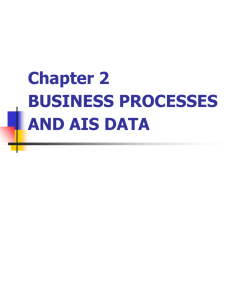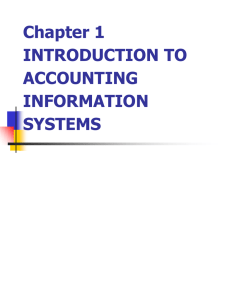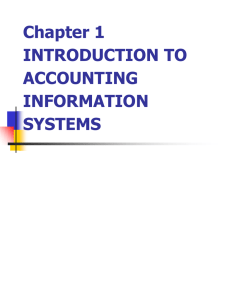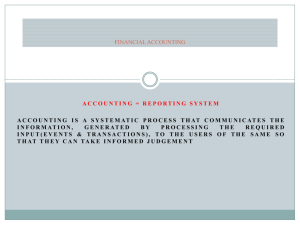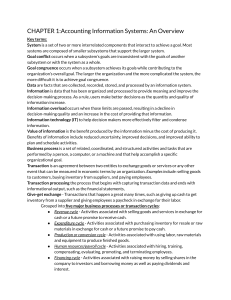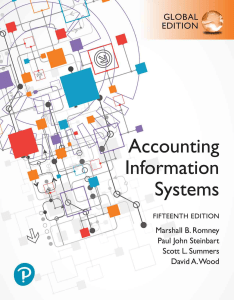Chapter 2 BUSINESS PROCESSES AND AIS DATA
advertisement
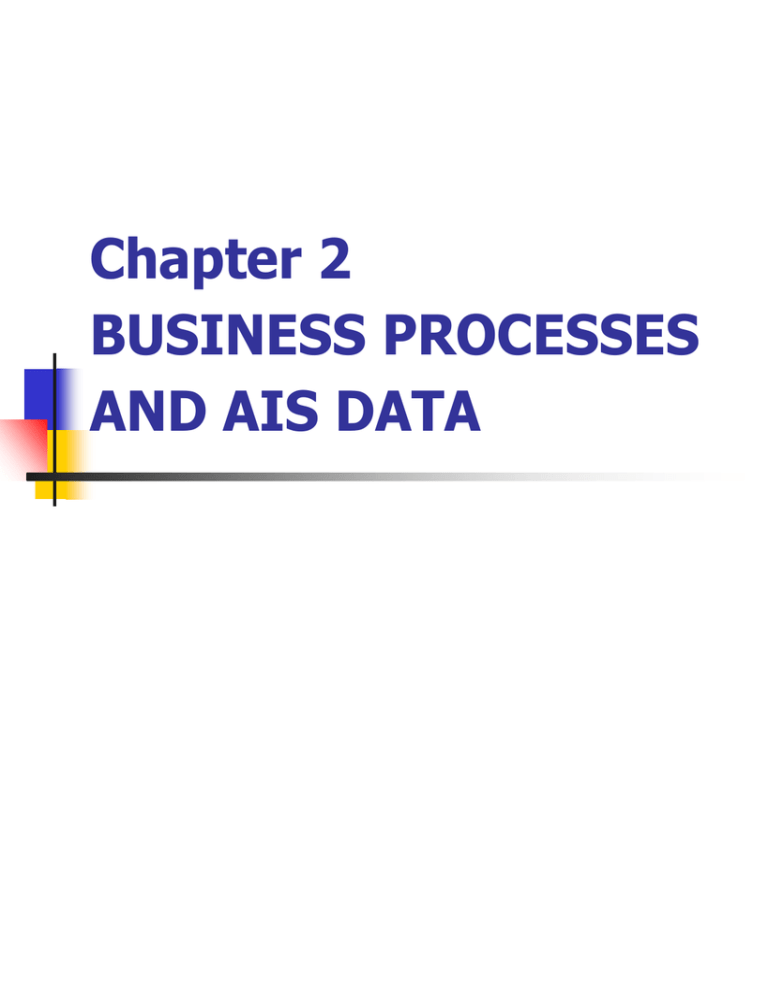
Chapter 2 BUSINESS PROCESSES AND AIS DATA Business Processes and Events Acquisition (purchasing) cycle Conversion cycle* Revenue cycle *Not covered in this text. Acquisition Cycle 1. Consult with suppliers. 2. Process requisitions. 3. Develop agreements with suppliers to purchase goods or services in the future. 4. Receive goods or services from the supplier. 5. Recognize claim for goods and services received. 6. Select invoices for payment. 7. Write checks. Revenue Cycle 1. Respond to customer inquiries. 2. Develop agreements with customers to provide goods and services in the future. 3. Provide services or ship goods to the customer. 4. Bill customer. 5. Collect cash. 6. Deposit cash in the bank. 7. Prepare reports. Identifying Events in Business Processes Guidelines for Recognizing Events: 1. Recognize - first event when a person or department within an organization becomes responsible for an activity. Identifying Events in Business Processes Guidelines for Recognizing Events: 2. Ignore - activities that do not require participation by an internal agent. 3. Recognize - new event when responsibility is transferred from one internal agent to another. Identifying Events in Business Processes Guidelines for Recognizing Events: 4. Recognize - new event when process has been interrupted and resumed later by the same internal agent. After the interruption, someone outside the organization or the process may restart the process. Or the process may continue at a scheduled time. Continuing After a Break Common ways: A person/organization outside the company initiates the continuation of the process. The process continues at a scheduled time. Identifying Events in Business Processes Guidelines for Recognizing Events: 5. Use an event name and description that reflects the broad nature of the event. Organizing Data in an AIS (Manual System) Source documents Journals General ledger Subsidiary ledgers Organizing Data in an AIS (Computerized System) Events that affect the general ledger Data organized by using source documents, journals, and the general ledger Files in a Computerized AIS File Concepts Entity Field Record File Transaction file Master file Reference data Reference field Summary data Summary field Types of Files and Data Master files Transaction files Master Files Characteristics: Store relatively permanent data about external agents, internal agents, or goods and services No details about individual transactions Stored data - either reference or summary Master Files Created to store reference data about: Goods and services Internal agents External agents Transaction Files and Events Transaction file characteristics: Store data about events Usually include a field for the date of the transaction Usually include quantity and price information Events occur in a specific sequence in the revenue and acquisition cycles. Events and Activities Three types of activities help in understanding an AIS: Recording events Updates File maintenance Keyterms Acquisition (purchasing) cycle Conversion cycle Entity Events External agents Field File File maintenance Keyterms Internal agent Master file Record Recording Reference data Reference field Revenue cycle Keyterms Subsidiary ledger Summary data Summary field Transaction cycle Transaction file Update
